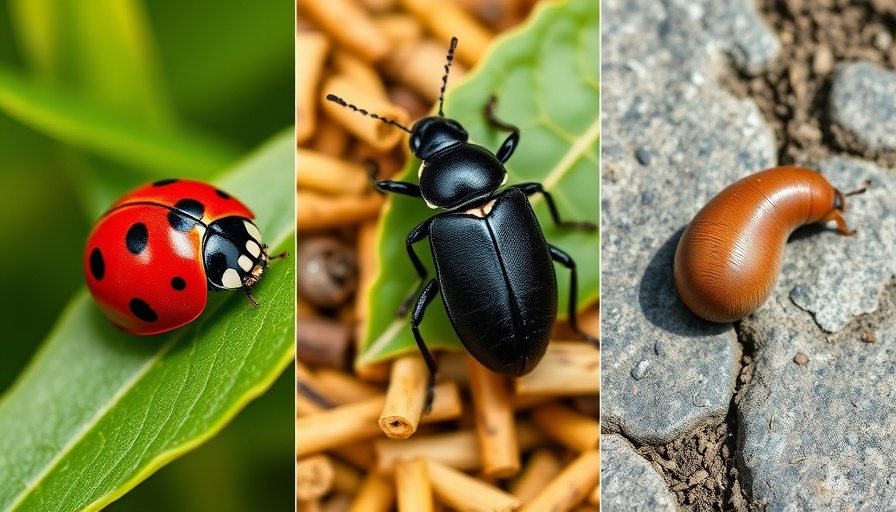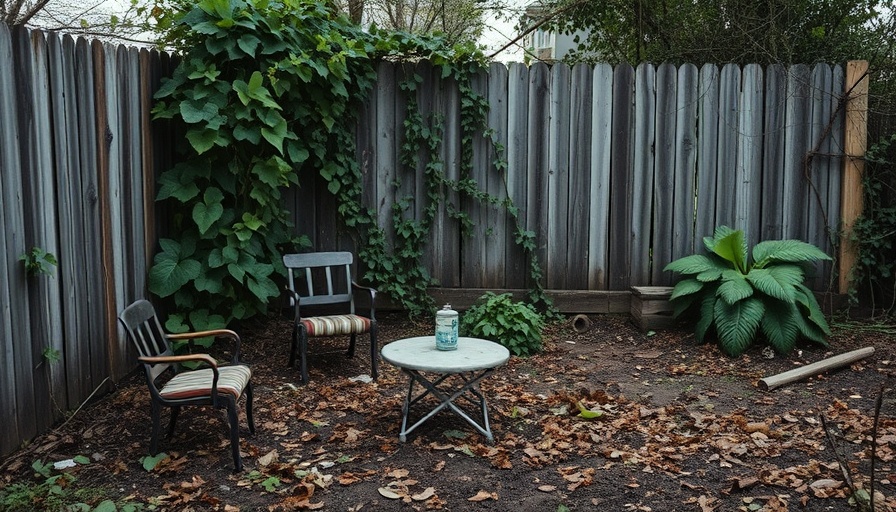
Are All Bugs Bad? Understanding Your Garden Allies
When stepping into your garden, it's crucial to recognize the silent partners working alongside you—and those that might be ruining your hard work. The video These Bad Bugs LOOK Like Good Bugs...Don't Get Them Confused! dives deep into distinguishing between helpful and harmful bugs, a skill that is particularly valuable for urban gardeners in Metro Vancouver where space is limited, making every plant count.
In These Bad Bugs LOOK Like Good Bugs...Don't Get Them Confused!, the discussion dives into the intricacies of identifying beneficial versus harmful garden bugs, exploring key insights that sparked deeper analysis on our end.
Identifying Your Friends: The Beneficial Bugs
Ladybugs, for example, are one of the best guardians you can have in your garden. Characterized by their vibrant red and black spots, a single ladybug can devour over 50 aphids in a day, saving your beloved beans and squashes from ruin. As Meg explains, creating an inviting environment—including plants like dill and yarrow—will attract these beneficial insects to do their vital pest control work.
Another hidden gem is the assassin bug. Unlike its namesake, this bug is a friend to your garden, preying on other harmful pests. With its sleek body and long spindly legs, it lies in wait for unfortunate caterpillars and aphids. To lure their presence, plant nectar-rich flowers that will sustain them.
Beware of the Look-Alikes: The Dangerous Duplicates
But not all beetles with spots are allies. For instance, the bean beetle mistakenly resembles the harmless ladybug but is a notorious foe, feeding on your vegetables and leaving them weak. The squash bug, with its flat, shield-shaped body, also poses a significant threat, sucking sap directly from plants like cucumbers and pumpkins, leading to wilting or even plant death. This confusion can come at a hefty price for community gardeners striving for a healthy garden.
These deceptive doppelgangers teach us the importance of keen observation and proactive defense strategies. For these threats, employing row covers early in the growing season can be a good line of defense. Additionally, manually removing pests or using beneficial nematodes in your soil can dramatically reshape the pest landscape in your small garden.
The Importance of Ground Beetles and Slugs
Ground beetles are often overlooked and yet they’re extraordinary nocturnal insect hunters, feasting on slugs, ants, and various pests that dwell within the soil. For Vancouver residents constrained by gardening space, these beetles can help maintain a natural balance. Create a hospitable environment by adding mulch or leaving undisturbed sections within your garden beds for these contaminants.
Interestingly, slugs can also play a beneficial role. While common slugs might munch on tender seedlings, the leopard slug thrives on decaying matter, making them efficient composters and thus vital for soil health. Their presence can indicate that your garden is a supportive ecosystem. Provide cover in the form of leaf litter or compost heaps to attract them, ensuring a healthy balance.
Takeaways for Effective Urban Gardening
Understanding the risks and rewards posed by various bugs is essential to successful gardening, particularly in small urban spaces where every plant has a role to play. Stay vigilant against pest impersonators while fostering the allies that can help nurture your garden. Adopting comprehensive pest management strategies rooted in natural gardening practices not only enhances your productivity but enriches your experience as a grower.
As you venture into your gardening journey, stay curious, observe carefully, and share your findings. If you’ve encountered confusing bug doppelgangers or have tips of your own to contribute, we'd love to hear from you! Your success story could add even more depth to our gardening community!
 Add Row
Add Row  Add
Add 


 Add Row
Add Row  Add
Add 

Write A Comment